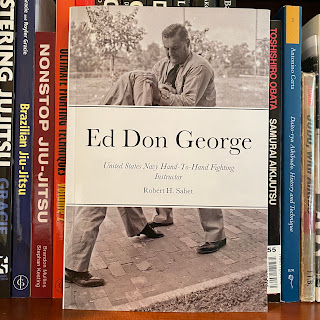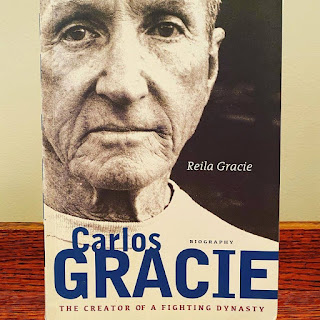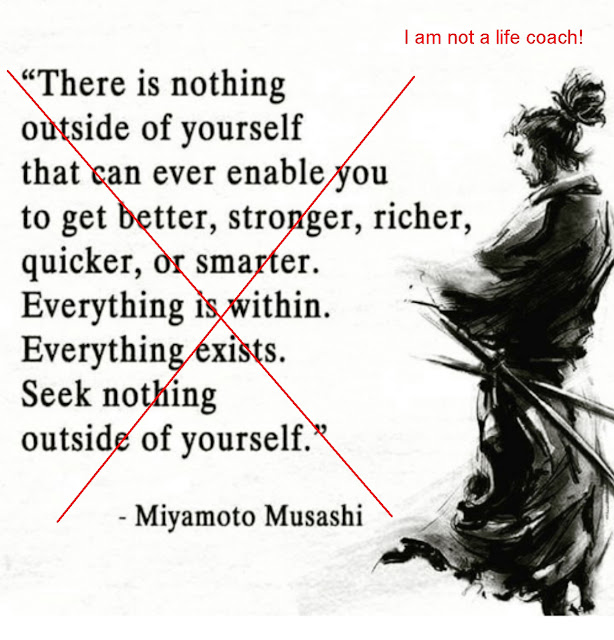October 2021 Book Survey
Welcome to the October 2021 reading survey!
Introduction
In October 2021, I (Richard) continued my reading plan that prioritized print books that have been on my shelf for months, or years. This post describes the biographies of a collection of martial artists -- some famous, some not.
The Life and Tragic Death of Bruce Lee, Linda Lee, 1975
Linda Lee (Cadwell) published The Life and Tragic Death of Bruce Lee in 1975. This is the London-based Star Books edition. In the United States, the book appeared as Bruce Lee: The Man Only I Knew, via New York-based Warner. This book seems ghost-written, but it might not be the case. It integrates some material from the late Mr. Lee's (1940-1973) writings, most or all of which have subsequently been published.
I like this book because it is one of the earliest by a family member, and it contains bits of information not seen elsewhere. For example, Ms. Lee notes that Mr. Lee participated in reserve military training as a student at the University of Washington (during the Vietnam era) in 1963. The military declared him ineligible for the draft (status "4F") due to an undescended testicle.
The "martial arts history" material is uniformly bogus, repeating the myths one reads from similar books and stories of the 1970s, where China is the old font from which everything sprung. The story about Mr. Lee's involvement with the Kung Fu TV series is straightforward enough, and contrary to the myths appearing after the 1993 Dragon movie. Ms. Lee says Warner Brothers was working on a martial arts show and they contacted Mr. Lee, who provided inputs. Ms. Lee says Warner Brothers commissioned Fred Weintraub to write a script that eventually became the Kung Fu TV series. Mr. Lee did not get the part, but Warner Brothers did offer him a contract for another (undefined) TV series in 1971. Mr. Lee declined that offer to pursue movies in Hong Kong.
Elvis's [sic] Karate Legacy, Wayne Carman, 1998
Elvis's [sic] Karate Legacy by Wayne Carman is the sort of niche book that I can't avoid. It combines two subjects which have fascinated me, particularly in the early 2000s: Elvis Presley (1935-1977) and American Kenpo Karate. Wayne Carman, one of Mr. Presley's fellow martial arts practitioners, published this book in 1998. Mr. Carmen met Mr. Presley in early 1971, after one of Elvis' friends and bodyguards, Red West, sought him out as a potential nunchaku instructor.
The book features great photos of Mr. Presley that I doubt appear elsewhere. Mr. Carmen fixates on Mr. Presley's "Taking Care of Business" or "T.C.B." theory of life. Elvis loved martial arts and wanted to appear on the cover of Black Belt magazine, which eventually happened years after his untimely death in 1977.
I did not care for the discussions of "ki" or the obviously fake demonstrations of Mr. Presley's supposed internal power. Those sort of parlor tricks involving "fists to the throat" don't impress me. I was also disappointed to read that Mr. Presley preferred to practice gun disarms using real firearms. After reading Mr. West's biography of Mr. Presley, and learning of his obsession with guns, I was not surprised!
The bottom line is that true Elvis fans will enjoy this book, although it is difficult to find. I am glad Mr. Carmen brought his story of Mr. Presley's devotion to martial arts to a wider audience.
Memories of Ed Parker, Leilani Parker, 1997/2012
I practiced American Kenpo Karate within the American Kenpo Karate Association in the early 2000s, so Memories of Ed Parker (1931-1990) by Leilani Parker seemed like a natural fit. Ms. Parker originally published the book in 1997, seven years after Mr. Parker's untimely passing (the third in a row in this survey) and then released it again in 2012. I had the fortune of training with Mr. Parker's son at one point, so I was curious to learn more about his father.
This book is really only meant for fans of Mr. Parker, but for that audience it is a gold mine. It features contributions from dozens of people who knew Mr. Parker. I was interested to note that Mr. Parker earned a black belt in judo before training in Chinese kenpo with William Chow. Mr. Parker liked kenpo's presumed ability to deal with multiple opponents, unlike judo's focus on a single opponent. On page 63 Mr. Parker said "Judo" Gene LeBell told him how he "beat Bruce Lee badly" on the set of the Green Hornet TV show. Page 64 featured a picture of Guro Dan Inosanto in an American Kenpo Karate uniform and patch, ostensibly prior to his training with Bruce Lee.
The best part of the book are the testimonials by Mr. Parker's children, which were touching. There are some editorial issues with the book; is it kenpo, Kenpo, or KENPO (?), and the use of "it's" vs "its" is annoying. However, if you are a fan of Mr. Parker, I recommend reading this book.
The Battle-Fighting Combatives of Allan Corstorphin Smith, Robert H. Sabet, 2020
The Battle-Fighting Combatives of Allan Corstorphin Smith by Robert H. Sabet is an examination of one of the pioneers of combatives in the West. This book desperately needs an editor and a layout expert. The author uses terms like "more-renown [sic] ones," rather than "more-renowned ones." The grammar and phrasing are sloppy. It uses a terrible courier font that I imagine is supposed to look like old military text. Most of the time I cannot tell if the author is speaking, or if Mr. Smith (1884-likely 1963) is speaking.
I would avoid this book unless the reader is very much interested in the topic.
Ed Don George, Robert H. Sabet, 2021
Robert H. Sabet's 2021 book Ed Don George (1905-1985) is a follow-on to the previous book. This title features improved readability via better fonts and layouts, with excellent clear photos. The majority of the techniques are questionable, which will likely anger the hard-core fans of World War II combatives.
This book is again only for researchers unable to find other sources.
The Masters Speak, 1st Ed, Jose M. Fraguas, 2001
I bought the first edition of The Masters Speak, by Jose M. Fraguas when he published it in 2001. Mr. Fraguas published a marginally longer second edition in 2006/2007 with 14 pages on Al Dacascos and 6 pages on Frank Trejo. The majority of the book consists of interviews followed by demonstration of techniques, some of which are laughable. For example, Mr. Bong Soo Han shows how to slash an adversary's neck using a business card! Jun Chong's knife defenses are simply dangerous, and Leo Giron's catching a knife hand, twice, is amusing. Steven Hayes' ninjitsu is as questionable as ever.
A lot of the book smells of "hero worship." Hee Il Cho has "the most powerful spinning back-kick the world of martial arts has ever known." However, I ended up liking this book.
One of the reasons I enjoyed it was the interview with the famous kickboxer Joe Lewis. On pages 194-6, Mr. Lewis says "Bruce [Lee] had a lot to offer, but couldn't pass his talents on to his pupils... Many of the people around Bruce were not very talented fighters. All the guys that Bruce taught, who got into competition, got their butts kicked and that's a fact... If I couldn't make it [Bruce's techniques] work, no one could... The principles were sound, but the techniques didn't work in competition." I'm sure the Jeet Kune Do folks are thinking "our techniques are too deadly for competition," but I thought these insights were unique.
Mr. Lewis also says "it wasn't true" that Bruce Lee was his teacher, but "at one time" Mr. Lewis considered himself a "Bruce Lee student." That's a bit contradictory, plainly.
I liked this book, but I do not see a need to run out and buy it.
Carlos Gracie: The Creator of a Fighting Dynasty, Reila Gracie, 2008/2014
Carlos Gracie: The Creator of a Fighting Dynasty by Reila Gracie arrived in Portuguese in 2008 and English in 2014. Ms. Gracie is mother to the famous Roger Gracie and daughter to Gracie patriarch Carlos Gracie (1902-1994). I bought my copy of this nearly impossible-to-find book from the Rilion Gracie online store in January 2020. Carlos was the eldest of the Gracie brothers who learned judo from various Japanese and Brazilian instructors in the 1920s, and eventually exported it as "Brazilian Jiu-Jitsu" to the United States and the rest of the world.
This book is best read after doing some solid research. For an in-depth review of the first 29 chapters, I recommend reading Roberto Pedreira's blog. I also highly recommend reading the Choque book series by Mr. Pedreira and the Opening Closed Guard book by Robert Drysdale. These books reveal that Ms. Gracie's source for some of Carlos' life, a comic book (!), is actually based on stories from Carlos. Therefore, Carlos is the main source for at least his early life in this biography, not a more reliable third party -- even if it is a comic book.
While reading this book, I had the sense that I was in a bizarro world where it was acceptable for young Carlos to be a bratty bully who assaulted Chinese Brazilians (p 31) or for his father Gastao to be a dynamite-making domestic terrorist (pp 31-32). Carlos sent one of his brothers to beat up a rival (Donato Pires dos Reis, who was actually a senior instructor to Carlos) in 1931. Carlos later assaulted in 1932, with the help of three brothers, another rival, Rufino dos Santos, to whom Carlos had lost a match in 1931. Ms. Gracie always provides excuses for this thuggish behavior, and none of them are convincing.
Ms. Gracie demolishes some of the mythos surrounding the founding of the "Gracie Academy" as well. After unfortunately repeating myths about Indian and Chinese origins for Japanese arts in chapter 3, Ms. Gracie notes that Carlos studied jiujitsu (not judo, as was really the case) for about a year with Mitsuyo Maeda. When Maeda departed in 1917, however, Carlos "continued to practice with [Maeda's] assistant [instructor], Jacinto Ferro" (p 44). By 1920, Donato Pires dos Reis "who had also studied jiujitsu in Belem with Maeda" invited Carlos to be an assistant instructor teaching jiujitsu to the Belo Horizonte Police Force (p 57). Donato "had a diploma from Maeda himself" (one of five who received such an award), unlike Carlos who received no rank from Maeda. It's tough to believe the myth that Carlos was Maeda's star pupil when Maeda awarded him no rank, and Carlos was an assistant instructor to those that did receive rank.
There was nothing like a "Gracie Academy" in 1925, the year seen on Gracie family marketing and clothing. In 1923 Carlos was teaching out of his home in the Sao Paulo neighborhood of Perdizes (p 64), and in 1925 he was teaching out of his living room in Rio. Ms. Gracie doesn't support the story that his youngest brother Helio just sat and learned jiujitsu through absorption without practice. Helio in fact practiced with his brothers, and he did teach one day when student Mario Brandt appeared for a class and no other Gracies were available (p 69).
I noticed that a picture supposedly showing Mitsuyo Maeda with Jigoro Kano and other Japanese instructors on could not possibly be labelled correctly. The photo likely shows Kano in his 30s, in the 1890s. Maeda was born in 1878, and the man labelled Maeda in the photo is grown and bald! Gracie family efforts to tie Maeda to Kano and "jujutsu" are weak at best, but no weaker than their attempt to connect Maeda to Carlos.
If one wants to venture into the world of truly weird content, one can turn to the vast material on Carlos' presumed supernatural abilities and bizarre worldview. Carlos was the original Gracie medical and science denier, possibly exposing his family to tuberculosis by defying medical orders to avoid contact with his sick (first) wife Carmem. To "treat" his infected daughter Sonja, Carlos placed her "naked on a sheet on the grass," expecting sunshine to heal her. Thankfully, she survived.
This is one of the weirdest books I've ever read. There is an incredible amount of material on the Gracie family, and not just Carlos himself. The family tree is an invaluable guide to understanding the first few generations centered on Carlos and Helio and their dozens of children. There is no need to seek this book out, however, as more realistic research is finally appearing.
A Life in Aikido, Kisshomarus Ueshiba, 2008/2015
It is fitting to follow a biography about a martial arts system founder with supernatural pretensions with another biography about a martial arts system founder with similar characteristics. A Life in Aikido, by Kisshomaru Ueshiba tells the story of the Morehei Ueshiba (1883-1969), founder of aikido. This is a beautiful hardcover book first published in Japanese in 2008 and translated into English by Kei Izawa and Mary Fuller in 2015. Of all the books thus far, this is the most well-produced title in terms of physical quality and writing effort.
I got a real sense of the founder's mindset from his son's book. Kisshomaru tells a story that his father once witnessed his grandfather Yoroku defending their family home from multiple "hooligans" when Morehei was a youngster. The founder told Kisshomaru that he wished he could have helped his father but was unable to do so (pp 59-60). An experience like that would certainly drive someone to pursue martial arts, and Morehei did so by beginning with Kito-ryu jujutsu in 1901/1902. That was one of the two root arts studied by the founder of judo, Jigoro Kano. Morehei had a decent amount of judo training prior to learning Daito-ryu, as his father hired future 9th dan judoka Kiyochi Takagi to teach judo at a dojo that Yoroku constructed in 1927.
It sounded like Morehei had a promising career in the Japanese army ahead of him, which he desired, but his father may have intervened to cut that path short. It is likely just as well considering the atrocities to come in the Pacific War.
I was not a fan of the mumbo-jumbo found throughout the book describing the founder's supposedly supernatural abilities. It would have been fascinating to see Morehei and Carlos Gracie compare notes in bizarro world. Despite Morehei's ability to dodge bullets and flip people with ease, "a puddle of water caused him to lose his balance" (p 200) and he suffered health problems due to a saltwater drinking contest (p 196). He also seemed power-hungry and creepy, as when he once told a student "the secret of getting strong is to massage my shoulders" (p 219). I did enjoy reading the source of the quote about aikido being rooted in atemi (striking), as p 231 reports the founder saying "my way is basically seventy percent atemi (stunning blow) and thirty percent throwing."
Read this book if you want to know more about the founder of aikido.
Aikido: My Spiritual Journey, Gozo Shioda, 1985/1991/1996, 2013
Aikido: My Spiritual Journey by Gozo Shioda (1915-1994) is the final book in this survey. It is a collection and translation of book segments and articles from 1985, 1991, and 1996, translated to English by Jacques Payet and Christopher Johnson and published in 2013. This is another gorgeous hardcover with an epilogue by Mr. Shioda's son Yasuhisa.
Mr. Shioda was a direct top student of the founder who later created his own aikido style called Yoshinkan aikido. He claims aikido is a "purely indigenous [to Japan] traditional martial art," not imported from China. Aikido is "empty hand... sword techniques" (p 45).
This book has plenty of other outrageous content. Mr. Shioda claims that his instructor Morehei participated in the salt drinking contest while he was trying to save everyone's life in China (p 33). Mr. Shioda boasts on pp 66-67 that he and one associated defeated 30 (!) yakuza in hand-to-hand street combat. He is also apparently the source of the story that asserts that Morehei, when faced with a six-man sharpshooter firing squad, suddenly appeared behind the shooters, even throwing one of them. He supposedly repeated this superhuman feat twice (pp 150-154).
One gem I found in this book is the idea that it was not previous martial arts training, according to Morehei, that made someone an effective aikido practitioner. He believed the opposite. When Mr. Shioda, a 3rd dan judoka, first appeared and tried to strike Morehei, the founder threw him and said "You must forget everything that you have done up to now" because "if habits from judo linger, they often hamper rather than help development in aikido" (p 133).
I would only read this book if you want more detail on the early days of aikido.
Conclusion
Based on my reading this month, I must report that I do not recommend any of these titles for the general martial arts or martial arts history audiences. While these books are good resources for research, I do not think any of them reach the "must-read" level.
Stay tuned for another book survey in about a month!
You may know about our Amazon Wish List. If you would like to help us get books to read and review from that list, then please consider supporting us via Buy Me a Coffee.
If you like this article, check out our Facebook page, Instagram account, Twitter feed, and Amazon Wish List. Be devoted!














Comments
Post a Comment